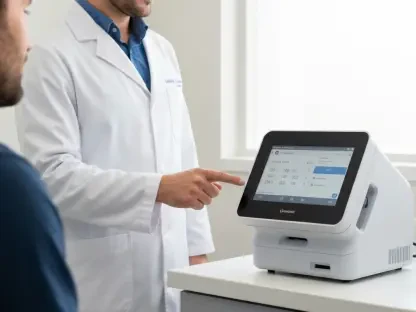As technology continues to reshape various aspects of daily life, its integration into educational environments is opening new avenues for supporting student well-being in ways previously unimaginable, especially through the adoption of telehealth services. One of the most promising developments is the implementation of telehealth within schools, allowing students to access medical and mental health care without leaving the classroom environment. This shift is particularly significant in light of recent state mandates, such as those in Maryland, where school districts are now required to establish policies for telehealth appointments during school hours. This emerging trend not only addresses barriers to healthcare access but also raises important questions about balancing educational priorities with health needs. By examining the ongoing policy updates in places like Frederick County Public Schools (FCPS), it becomes clear that telehealth has the potential to redefine how student wellness is approached, creating a more inclusive and responsive system for all.
Policy Updates Driving Telehealth Integration
In response to new state legislation, school districts across Maryland are revising their health and wellness policies to accommodate telehealth services for students during the school day. Specifically, in Frederick County, the Board of Education is updating Policy 409, previously focused on general health promotion, to align with a mandate requiring telehealth access by the upcoming school year. This update reflects a broader commitment to ensuring that students can connect with healthcare providers virtually, whether for physical health concerns or mental health support. The policy emphasizes the creation of designated spaces within schools for these appointments, alongside supervision to minimize disruptions to learning. Importantly, the district’s role is defined as a facilitator, providing the environment and necessary technology rather than direct medical services, which remain the responsibility of external providers. This careful delineation ensures clarity in implementation while addressing logistical challenges.
Equitable access stands at the core of these policy revisions, with a clear intent to make telehealth services available to all students, regardless of their personal circumstances. While the policy encourages the use of personal devices for virtual appointments, school-provided technology will be offered when needed, ensuring no student is left behind due to lack of resources. Parental involvement is another critical component, as appointments during school hours must be arranged and attended by a parent or guardian, either in person or virtually with approval. This requirement upholds family engagement while adhering to state laws that allow older students some autonomy in accessing mental health care. Additionally, the policy sets boundaries by discouraging recurring weekly sessions during school time to avoid negative impacts on education and to preserve time slots for other students. This balance highlights the district’s effort to integrate healthcare access without compromising instructional priorities.
Balancing Health Needs with Educational Goals
One of the primary challenges in integrating telehealth into schools is ensuring that it supports rather than hinders academic progress. School officials in Frederick County have acknowledged that while access to virtual medical and mental health appointments is vital, careful coordination is necessary to prevent disruptions to a student’s learning experience. For instance, some mental health sessions may leave students emotionally affected, potentially making an immediate return to class difficult. This reality underscores the need for thoughtful scheduling and support mechanisms, such as designated staff to assist students post-appointment. By addressing these nuances, schools aim to create an environment where health interventions complement rather than conflict with educational objectives, fostering a holistic approach to student development that prioritizes both mind and body.
Another key consideration is the prevention of resource overuse, as schools must manage limited spaces and time slots for telehealth appointments to ensure fairness. The updated policy in Frederick County explicitly limits recurring appointments during school hours, a measure designed to maintain equity among students seeking access to these services. This approach also reflects an understanding of the potential strain on school staff and facilities if telehealth usage becomes overly frequent. By setting these parameters, the district seeks to safeguard instructional time while still providing a crucial lifeline for students who may face barriers to healthcare outside of school. The unanimous support from the school board for advancing this policy to a final reading demonstrates a shared recognition of its importance, even as slight delays in meeting state deadlines highlight the complexity of implementing such a transformative initiative.
Future Steps for Sustainable Implementation
Reflecting on the strides made, the efforts of the Frederick County Board of Education to revise and finalize their student health policy showcase a proactive stance toward meeting state mandates. The unanimous decision to move the policy forward for a second reading signaled a collective commitment to enhancing student wellness through innovative means. The collaboration between legal counsel and student services to craft accompanying regulations further ensured that the implementation was structured and well-considered. Looking back, the slight delay in meeting the initial timeline did not detract from the district’s dedication, as it prioritized thoroughness over haste in rolling out these critical updates.
Moving forward, the focus should shift to refining the logistical aspects of telehealth integration, such as training staff to manage virtual appointment spaces and ensuring robust technological support for seamless connectivity. Schools might also consider partnerships with healthcare providers to streamline service delivery and address any gaps in access. Continuous evaluation of the policy’s impact on student outcomes will be essential, allowing for adjustments that better serve both health and educational needs. Engaging parents and students in ongoing dialogue about the benefits and challenges of telehealth can foster greater acceptance and effectiveness, paving the way for a model that other districts might emulate in their pursuit of comprehensive student wellness.









